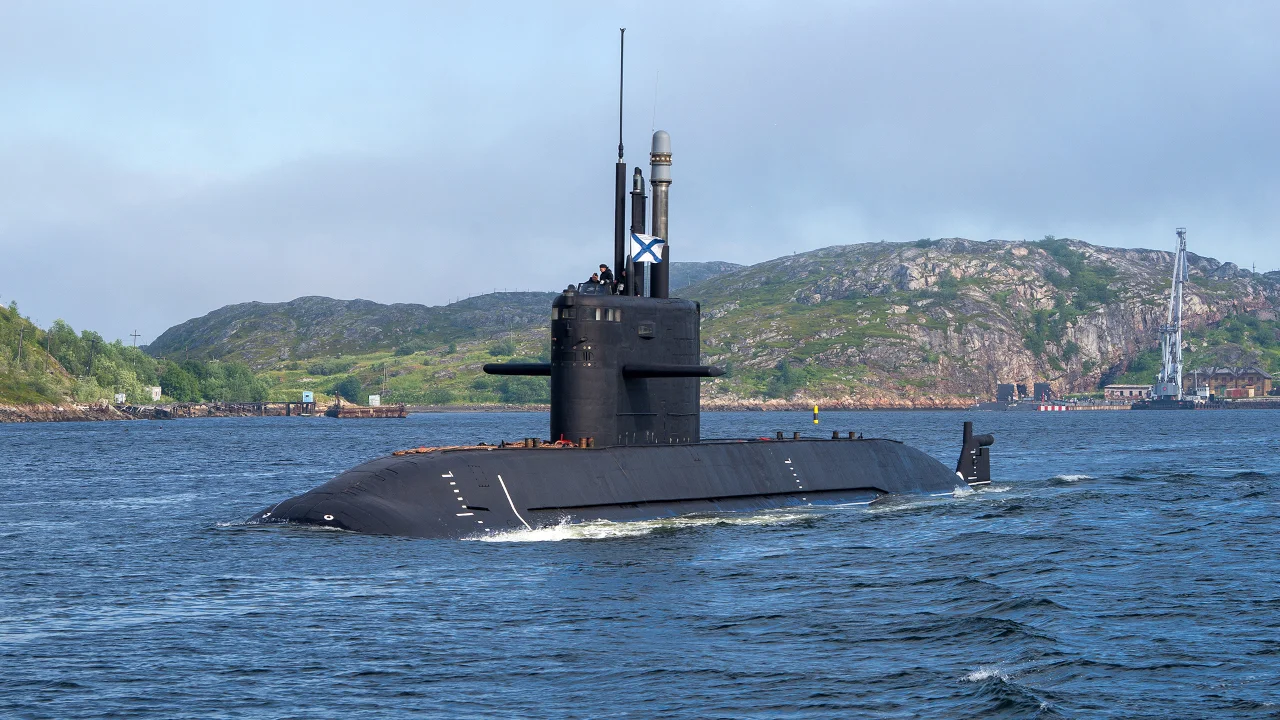Russia Launches Lada-Class Submarine, the Successor to the Kilo-Class
Recently, the Russian Navy has received its newest conventional submarine, named the Lada class or Project 677, which was developed to replace the long-serving Kilo class submarines that have served the nation.
(DEFENCE SECURITY ASIA) — Over the past decade, the Russian Navy has added 24 conventional and nuclear submarines to its fleet, marking an eightfold increase compared to the previous decade.
Observers note a significant shift where the Russian Navy has seen a sudden surge in resources and assets, enabling the superpower to extend its submarine operations into the Atlantic.
Deputy Minister of Industry and Trade, Viktor Yevtukhov, was reported stating that two decades ago, any addition to Russia’s naval assets was a significant event, but today, it has become routine.
Recently, the Russian Navy received its newest conventional submarine, named the Lada class or Project 677, developed to replace the long-serving Kilo class submarines.
The first of the Russian Navy’s Lada class submarines is named “Kronstadt.”

Despite their long service, the conventional Kilo class submarines remain the backbone of Russia’s conventional submarine capabilities.
Moscow intends to replace its Kilo class submarines with the Lada class, but delays have necessitated upgrades to the Kilo class with an “Improved Kilo Class” variant.
Unlike the Kilo class, the Lada class submarines are designed with a unibody structure and towed sonar, among other modernization efforts.
Observers state that in addition to towed sonar, the Lada class submarines are also equipped with the most advanced conformal sonar available on a conventional submarine.
The sonar system of the Lada class is considered a critical advantage, allowing it to detect enemy submarines before being detected themselves.
Although not equipped with Air Independent Propulsion (AIP) technology, observers suggest that the Lada class might be equipped with lithium-ion battery technology, enabling it to operate underwater longer and more quietly than previous submarines.
With one Lada class submarine already launched, two more under construction, and others planned, the Lada class conventional submarines are set to make a strong statement about Russia’s coastal submarine capabilities.
Regarding their armament systems, like the Kilo class submarines equipped with “Kalibr” cruise missiles and torpedoes, the Lada class submarines are expected to have similar or superior capabilities.
The “Kalibr” cruise missiles have various variants with ranges from 300km to 1,500-2,000km.

Recently, there have been reports that the manufacturer of the “Kalibr” missiles is developing a variant capable of hitting targets up to 4,000km to 4,500km away.
The “Kalibr” cruise missiles can also be equipped with nuclear warheads.
In recent months, the UK Ministry of Defense has been concerned after successfully tracking the movement of several Russian nuclear-powered submarines in nearby waters using what they described as “unusual” and previously unused seabed routes.
Senior British Navy officials have reported Russian submarines operating in the North Atlantic, Irish Sea, and North Sea.
“The United Kingdom has detected the presence of Russian submarines in the North Atlantic, Irish Sea, and North Sea. They (the Russian submarines) are using unusual submarine routes that they have never taken before.” – DSA


